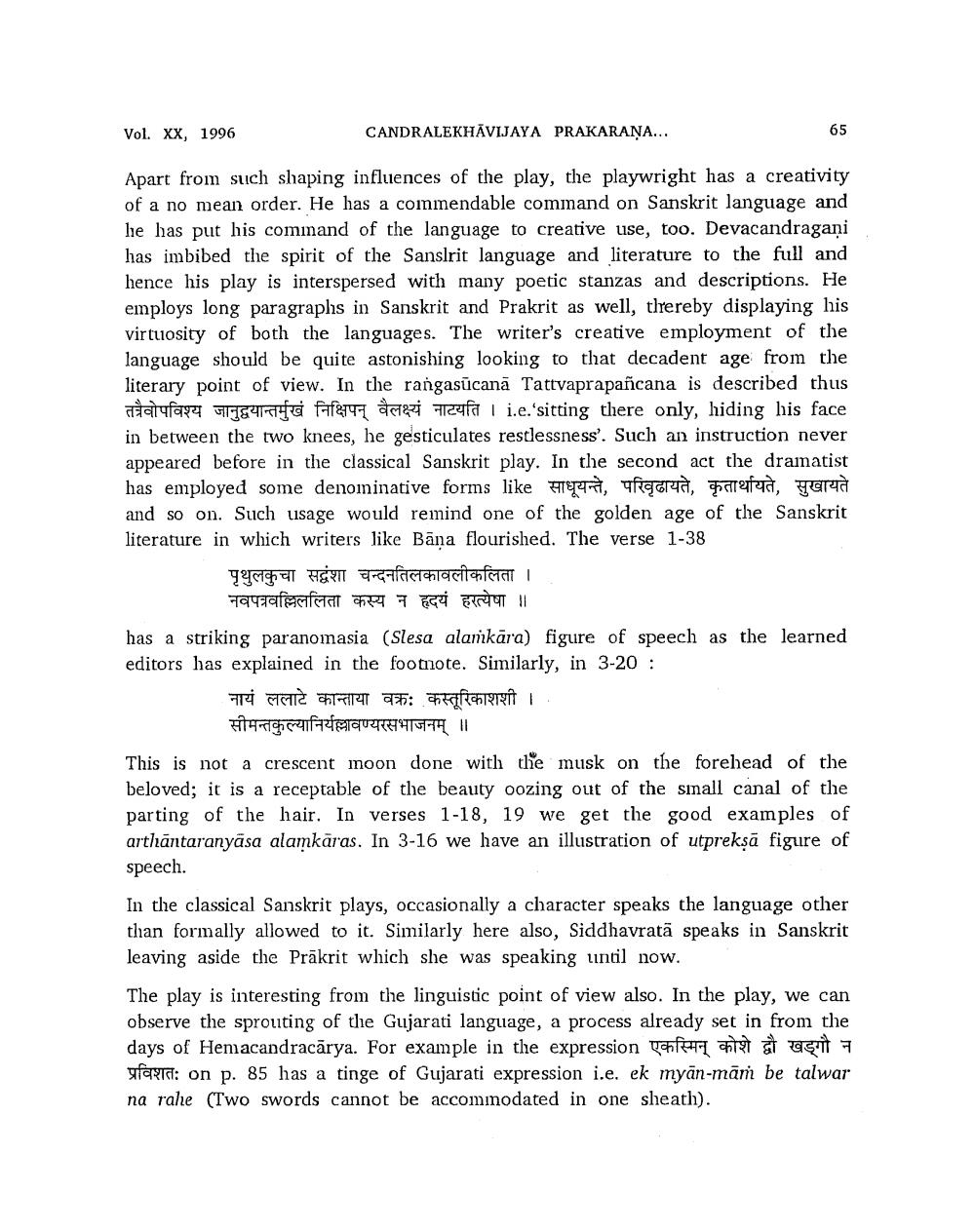________________
Vol. XX, 1996
CANDRALEKHĀVIJAYA PRAKARANA...
65
Apart from such shaping influences of the play, the playwright has a creativity of a no mean order. He has a commendable command on Sanskrit language and lie has put his cominand of the language to creative use, too. Devacandragani has imbibed the spirit of the Sanslrit language and literature to the full and hence his play is interspersed with many poetic stanzas and descriptions. He employs long paragraphs in Sanskrit and Prakrit as well, thereby displaying his virtuosity of both the languages. The writer's creative employment of the language should be quite astonishing looking to that decadent age from the literary point of view. In the rangasūcană Tattvaprapancana is described thus nitalyfar vla&470 Fafant actezi freefa I i.e.'sitting there only, hiding his face in between the two knees, he gesticulates restlessness'. Such an instruction never appeared before in the classical Sanskrit play. In the second act the dramatist has employed some denominative forms like Hry na wągrua, patefua, yard and so on. Such usage would remind one of the golden age of the Sanskrit literature in which writers like Bāna flourished. The verse 1-38
पृथुलकुचा सद्वंशा चन्दनतिलकावलीकलिता ।
नवपत्रवल्लिललिता कस्य न हृदयं हरत्येषा ॥ has a striking paranomasia (Slesa alankāra) figure of speech as the learned editors has explained in the footnote. Similarly, in 3-20 :
नायं ललाटे कान्ताया वक्र: कस्तूरिकाशशी ।
सीमन्तकुल्यानियल्लावण्यरसभाजनम् ॥ This is not a crescent moon done with the musk on the forehead of the beloved; it is a receptable of the beauty oozing out of the small canal of the parting of the hair. In verses 1-18, 19 we get the good examples of arthantaranyāsa alamkāras. In 3-16 we have an illustration of utpreksā figure of speech.
In the classical Sanskrit plays, occasionally a character speaks the language other than formally allowed to it. Similarly here also, Siddhavratā speaks in Sanskrit leaving aside the Prākrit which she was speaking until now.
The play is interesting from the linguistic point of view also. In the play, we can observe the sprouting of the Gujarati language, a process already set in from the days of Hemacandracārya. For example in the expression Teferichtet at uçit 7 sfarta: on p. 85 has a tinge of Gujarati expression i.e. ek myān-mām be talwar na rahe (Two swords cannot be accommodated in one sheath).




